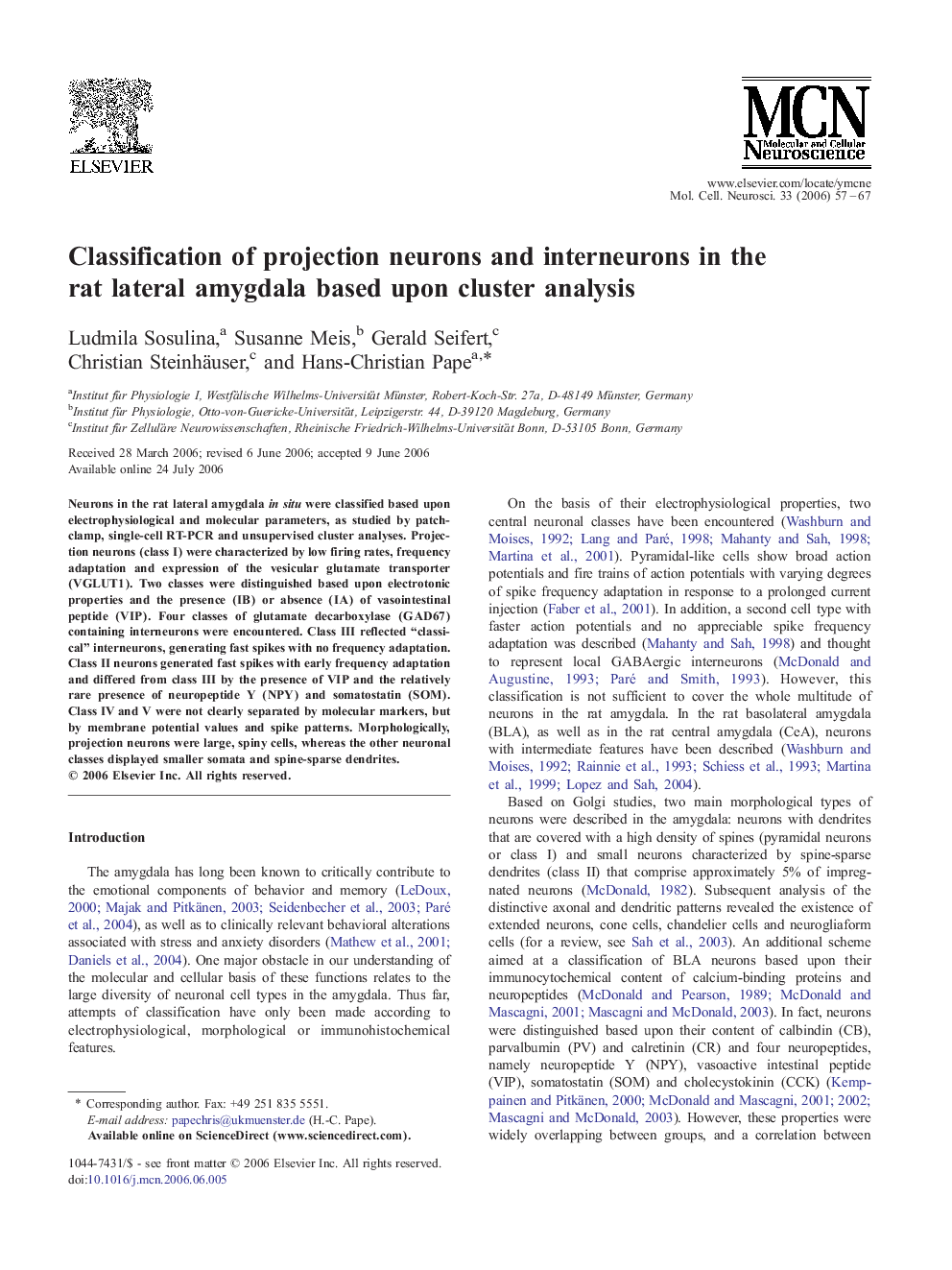| Article ID | Journal | Published Year | Pages | File Type |
|---|---|---|---|---|
| 10956759 | Molecular and Cellular Neuroscience | 2006 | 11 Pages |
Abstract
Neurons in the rat lateral amygdala in situ were classified based upon electrophysiological and molecular parameters, as studied by patch-clamp, single-cell RT-PCR and unsupervised cluster analyses. Projection neurons (class I) were characterized by low firing rates, frequency adaptation and expression of the vesicular glutamate transporter (VGLUT1). Two classes were distinguished based upon electrotonic properties and the presence (IB) or absence (IA) of vasointestinal peptide (VIP). Four classes of glutamate decarboxylase (GAD67) containing interneurons were encountered. Class III reflected “classical” interneurons, generating fast spikes with no frequency adaptation. Class II neurons generated fast spikes with early frequency adaptation and differed from class III by the presence of VIP and the relatively rare presence of neuropeptide Y (NPY) and somatostatin (SOM). Class IV and V were not clearly separated by molecular markers, but by membrane potential values and spike patterns. Morphologically, projection neurons were large, spiny cells, whereas the other neuronal classes displayed smaller somata and spine-sparse dendrites.
Related Topics
Life Sciences
Biochemistry, Genetics and Molecular Biology
Cell Biology
Authors
Ludmila Sosulina, Susanne Meis, Gerald Seifert, Christian Steinhäuser, Hans-Christian Pape,
